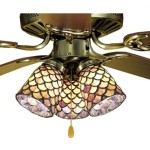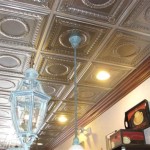Ceiling fans are one of the most common methods of cooling a home, and a high velocity fan is a powerful version of the traditional ceiling fan. These powerful fans are designed to provide greater air circulation and are ideal for larger rooms. In this article, we will discuss the benefits of a high velocity ceiling fan and what you should consider before installing one in your home.
What is a High Velocity Ceiling Fan?
A high velocity ceiling fan is a powerful fan designed to move large amounts of air quickly. This type of fan is often used in large rooms, such as gyms, warehouses, and other commercial spaces. The fan typically has a larger motor and blades than a standard ceiling fan and can move more air in less time.
Benefits of a High Velocity Ceiling Fan
High velocity ceiling fans offer a number of advantages over traditional ceiling fans, such as:
- Greater air circulation
- Faster cooling
- More efficient energy usage
- Quieter operation
- Longer lifespan
Things to Consider Before Installing a High Velocity Ceiling Fan
Before installing a high velocity ceiling fan, there are a few things to consider:
- Size of the fan: High velocity ceiling fans are larger than traditional fans and require more clearance space in the ceiling. Be sure to measure the area where you plan to install the fan and check the manufacturer’s specifications to ensure a proper fit.
- Power requirements: High velocity ceiling fans are more powerful than traditional fans and require a larger power supply. Be sure to consult with a qualified electrician to ensure that your home’s wiring can accommodate the fan.
- Noise level: High velocity ceiling fans are generally quieter than traditional fans, however, some models can be quite loud. Be sure to check the manufacturer’s specifications to determine the fan’s noise level before purchasing.
Conclusion
High velocity ceiling fans are a great way to improve air circulation in larger rooms and can offer a number of benefits over traditional ceiling fans. Before installing a high velocity ceiling fan, however, it’s important to consider factors such as size, power requirements, and noise level. With the right fan, you can enjoy the benefits of improved air circulation and energy efficiency in your home.






:sharpen(1,0,false):quality(100)/product/39/009/1.jpg)






Related Posts










